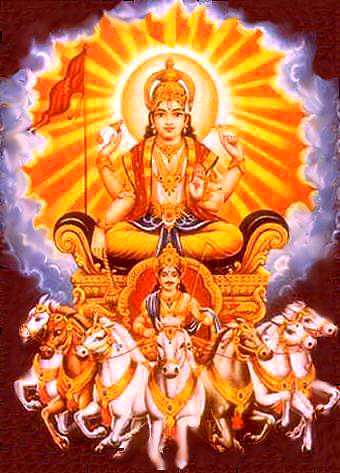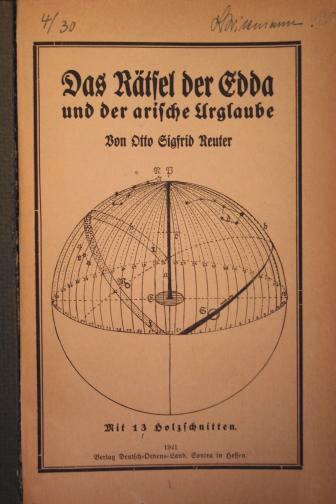|
|
|
|
India
ARYAN GODS Religion and worship dawned in India with the birth of man. Reverence for the divine is revealed in the fragments of early history. People of the Indus Valley Civilisation (7,000 to 1,600 BC), prayed to a Mother Goddess. Ritual and religion played a large part in their daily life. The famous Mohenjodaro statue of the Priest King affirms the primal power conferred on a religious leader. Seals engraved with inscriptions of animals avow the ancient veneration of the cow. Fire and trees were also worshipped. While their civilisation flourished, the signs of belief were expressed in daily living, until the elements changed their fortunes. The rain that had once graced their grain, shunned their land. The earth shook. A massive earthquake changed the course of the river, Saraswati. Eluded by water the people migrated east when prosperous trade shrank and robbed them of their riches. About this time, a people of Central Asia, the Aryans invaded India (about 3,000 BC). They were confronted by the original inhabitants of India, the Dravidas and the Nagas. The Dravidas and Nagas were defeated when they were besieged by wave upon wave of Aryan invasion. They became a colonised people and the Aryans settled in the plains of Northern India. The Aryan religion was primitive and consisted of the worship of the powers of nature. The Vedas, a collection of hymns were composed in pre-classical Sanskrit during the second millennium BC. These Vedic hymns created the first stage of Hindu mythology as we know it. The original Veda is the Rig Veda. The Yajur-Veda, Sama-Veda, and Atharva-Veda, were composed later. The hymns addressed the elements- Surya (the Sun), Agni (fire), Indra (thunder), Vayu (the Wind) and Varuna (Ocean). The elements were the early gods, of whom Surya, the Sun -God, is the most important. He is the son of Aditi (the Sky Goddess) and Dyaus (the God of light in the sky). His radiance energy which sustained the day gave him his other name Din-Kara (day-maker). In the Vedas Surya is depicted as a handsome golden youth (like Apollo), who rides a chariot drawn by seven red mares, each named for a day of the week. His twin sons, the Ashvins often precede him in their golden chariot. His capital is Vivasvati, the Sun City. The swastika, is the sign of Surya, a symbol of his generosity. The direction of the swastika indicates the four cardinal directions in which sticks were placed for Vedic sacrificial fires Agni (the Fire God) was worshipped with great devotion. His seven arms span the seven continents. He is portrayed with an extended stomach representing his ability to devour. His belly is also a reminder of the time when Agni consumed the magnificent forests of India to bring land under the plough. He is coloured red and rides a ram. His tongue is a flame that licks up sacrificial ghee (butter). Sacrifice was a central concept to the Aryan religion and fire played an important role. Present in every dwelling of the rich or the poor, Agni was the sakshin (witness) of the holy trinity of rituals, sacrifice, marriage and the funereal rites. During a Vedic wedding ceremony the bride and groom walk around the fire seven times to sanctify their marriage, for Agni is considered witness and representative of all gods. Indra (God of the sky). Rainmaker, bearer of thunder and conductor of lightning. Indra was the creator of storms with his Vajra (thunderbolt). His powers liken him to Zeus-Jupiter. Lord of the skies, Indra has a white elephant called Airavat. He rides in a golden chariot drawn by horses whose flying manes imply the speed with which they draw him. Indras weapons are the Vajra, bow (the rainbow), net, and a hook. As Weather-God and sustainer of life he battles against the God of Drought and Death. Hindus aspire to live in Swarga (heaven) with Indra after death, for despite his dazzling weapons Indra is a peaceful God, who offers refuge to all who follow the path of Dharma (righteousness). Vayu is the god of the wind like the Greek God Aiolos. He is the father of the monkey god Hanuman and of the Pandava Prince Bhima. Flighty and swift he often carried Indra through the skies. His mount is a deer and he carries a wheel in his hand as a symbol for speed. Vayu is revered for he signifies a vital sign of life - breath. Vayu is also called Pavan, one who enlivens prakriti (nature). As Pavan, he is the bearer of life dispersing seeds. He scatters pollen to bring flowers to bloom and clouds the air with floral perfumes. Whimsical by nature, he is a god of violent character. After a quarrel with Indra who lived on Mount Meru, Vayu broke off the top of Mount Meru and hurled it in the ocean. The peak surfaced at the Southern tip of India and is now said to be Sri Lanka. Varuna is the God of the oceans and is identified with Poseidon. He is the element vari (water).His chariot is drawn by the fluid strength of ocean waves. Varuna was the earlier rainmaker, until Indra took over his function. Under the oceans Varuna lives in an underwater palace called Pushpagiri (mountain of flowers). His mount is a fish called Makara. In the oldest hymns he was described as the creator. He fixed the orbit for planets and the directions of the winds and the flight of the birds. The Vedic Gods were worshipped with prayer and sacrifice. Their very conception was Aryan, most of the Gods drove chariots drawn by horses. The Aryans had introduced the horse to India. The highest sacrifice was the Ashvamedha (the Horse Sacrifice). When a king had no male heir, he would consign his finest stallion to the flames. His wives would then spent the night close to the smouldering remains of the carcass. It was believed that the spirit of the animal would make the queens fertile. The Aryans also believed that a hundred such Ashvamedhas would make the king, emperor of the world. SOURCE: Shubhkaamna  |
|
Otto Sigfrid Reuter has obtained in recent years the dubious sobriquet of, together with Hermann Wirth, the founding father of Nazi Archaelogy. Reuter (1876 - 1945) was a staunch Ariosophist and founder of several Aryan-Christian orders such as the Deutschglaubige Gemeinschaft and the Germanische Glaubensgemeinschaft, founded in 1911 and 1912 respectively. The aim of these orders was the fusion of blood and religion, hence, membership was restricted to "true Aryans". Some have it that these orders still exist today. Reuter's reputation rests predominantly on his book Germanische Himmelskunde (German Sky Lore), published in 1934. The idea behind his orders was to rid Christianity of the Jewish influences to make it more digestible for Germans. Reuter's book Sigfrid oder Christus? Ein Kampfruf (Sigfrid or Christ? A Battle Cry), published in 1908, reflects his philosophy. Highly succesful, it was reprinted in 1910. His next book, Das Ratsel der Edda und der Arische Urglaube (The Riddle of the Edda and the Ancient Religion of the Aryans), published in 1921 and 1923, was a continuation of his ideas. Reuter believed in the reality of the Edda "like a maniac" as one authority has it. This was one of the reasons why Reuter left various nationalist and racist German orders which stood at the cradle of National Socialism. It appears that Reuter could not tolerate ideas that were not of his own. Reuter's philosophy based on the study of the Edda was that the oldest human culture had come from a Germanic North. The idea of a world axis - the Axis Mundi or Irminsul, the column that supports heaven -was invented by the Germans and the names of all the constellations were based on ancient German science that had its origin aeons before our time. He also believed that the divine was to be found within the German race. Reuter died in 1945. With him perished his dreams of a prehistoric Aryan supercivilisation that had encoded its secret wisdom in the stars, amidst the smoke and the ruins of the Gotterdammerung of the Third Reich. |
|
| FAIR USE NOTICE: This page contains copyrighted material the use of which has not been specifically authorized by the copyright owner. Pegasus Research Consortium distributes this material without profit to those who have expressed a prior interest in receiving the included information for research and educational purposes. We believe this constitutes a fair use of any such copyrighted material as provided for in 17 U.S.C § 107. If you wish to use copyrighted material from this site for purposes of your own that go beyond fair use, you must obtain permission from the copyright owner. | |
|
|


